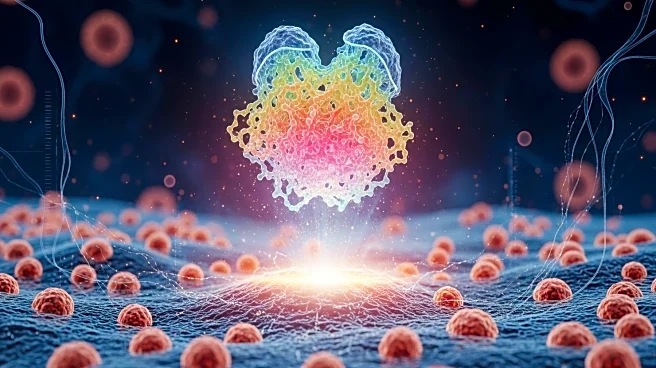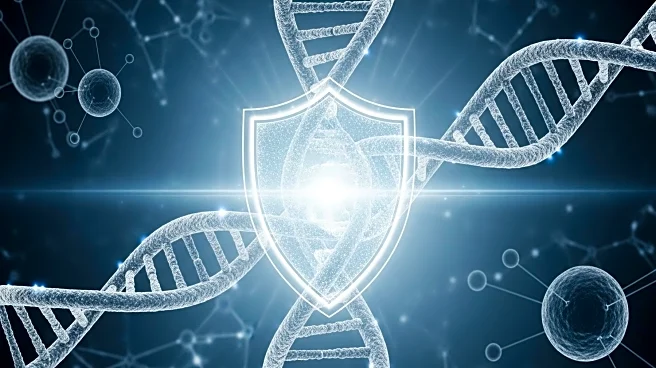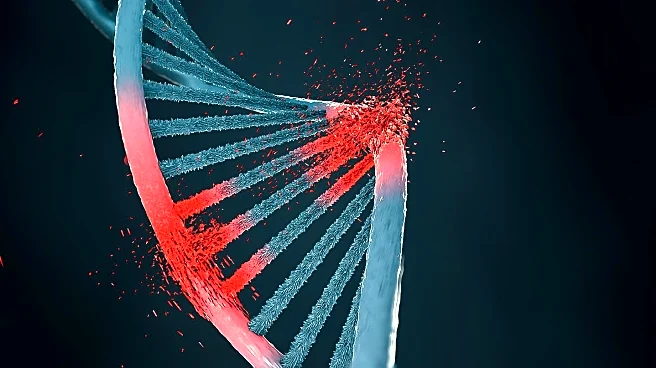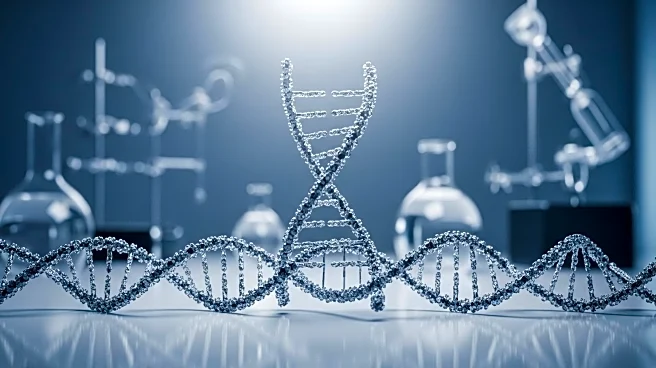What's Happening?
Recent research has focused on the development of ALFA nanobody-guided endogenous labeling, a technique that enhances the visualization of cellular components. This method utilizes nanobodies to target specific antigens within live cells, allowing for precise manipulation and detection. The study involved quantitative analysis of fluorescence intensity in SON cells, using various transfection methods to observe changes in fluorescence. The research demonstrated significant differences in fluorescence intensity between different cell groups, indicating the effectiveness of the nanobody-guided labeling technique. This approach provides a powerful tool for studying cellular processes and protein interactions in real-time, offering insights into cellular dynamics and molecular biology.
Why It's Important?
The advancement in nanobody-guided labeling techniques holds significant implications for the field of molecular biology and medical research. By enabling precise visualization and manipulation of cellular components, researchers can gain deeper insights into cellular functions and disease mechanisms. This technology could lead to improved diagnostic methods and therapeutic strategies, particularly in understanding complex diseases such as cancer. The ability to observe cellular processes in real-time enhances the potential for discovering new drug targets and understanding the effects of treatments at a molecular level. This development represents a step forward in personalized medicine and targeted therapies, potentially benefiting patients with more effective and tailored treatment options.
What's Next?
Future research will likely focus on refining the nanobody-guided labeling technique to increase its specificity and efficiency. Researchers may explore its application in various cell types and conditions, expanding its use in different areas of biomedical research. Additionally, collaborations between academic institutions and biotech companies could accelerate the development of commercial applications, making this technology more accessible to laboratories worldwide. As the technique evolves, it may become a standard tool in cellular imaging, contributing to advancements in drug discovery and molecular diagnostics.
Beyond the Headlines
The ethical implications of manipulating live cells using nanobody-guided techniques should be considered, particularly in terms of genetic modifications and potential impacts on human health. As this technology progresses, regulatory frameworks may need to adapt to ensure safe and responsible use. Furthermore, the cultural acceptance of such advanced biotechnological methods may vary, influencing public perception and policy decisions.











